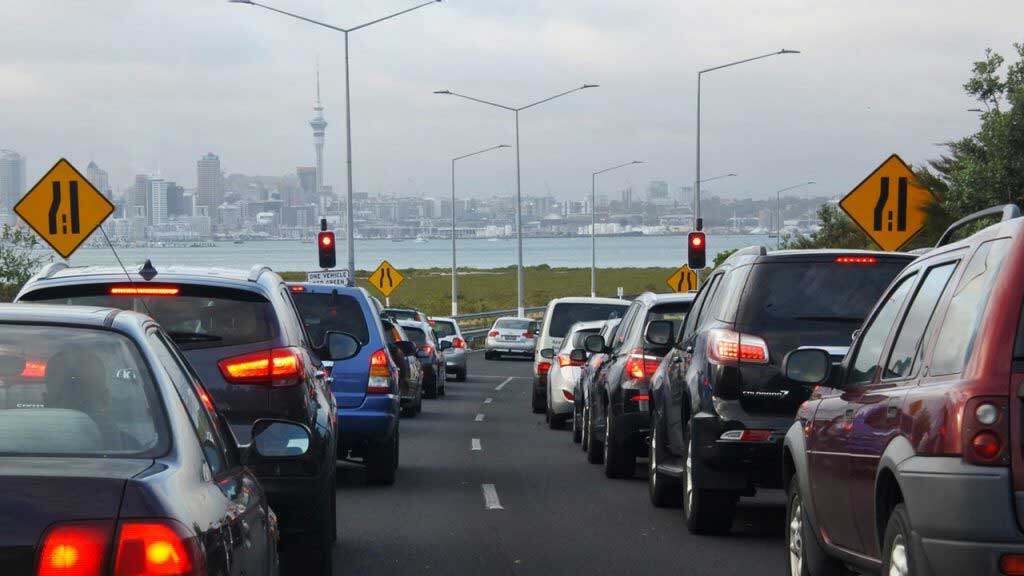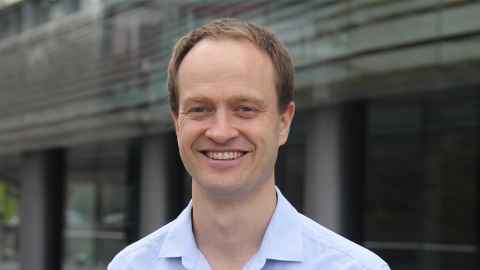Improving Auckland’s public transit network isn’t enough to reduce vehicle travel. Further deterrents to driving, such as a congestion charge, will help meet the city’s emissions reduction goals, say researchers.


Substantially improving Auckland’s rapid transit options will do little to reduce kilometres travelled by private vehicles, according to a study exploring the impact of rapid transit on congestion, vehicle use, wages, and city size.
Business School academics Dr Ryan Greenaway-McGrevy and Dr James Allan Jones at the Economic Policy Centre model improvements to public transit, such as the construction of a new rapid transit line, in their forthcoming paper titled Mode Choice and the Effects of Rapid Transit Improvements on Private Vehicle Use and Urban Development.
Their model seeks to reconcile evidence that overall driving tends to decrease in European cities following an improvement in public transport, but tends to increase in American ones.
They show that despite rapid transit improvements, total kilometres travelled by private vehicles will increase if a city is highly congested or the public transit network is underdeveloped.


The researchers found that reductions in vehicle use from commuters switching to rapid transit (such as extra rail or subway lines) may be offset or even exceeded by new road use generated in response to such transit improvements.
“Improvements to public transit have a lot of benefits for a city, unfortunately reducing total driving is unlikely to be one of them if undertaken in isolation,” says Dr Jones.
If the roads are quite congested, then encouraging more public transit commuting through additional lines will free up road space, says Jones. As a result, congestion will initially fall as regular commuters switch from private vehicles to rapid transit.
But the reduction in congestion will encourage other drivers onto the roads, says Jones, drivers that had previously put off trips because they found that the costs of sitting in traffic were too high.
Many of these new car trips will come about as people beyond the city fringes start commuting into the city, say the researchers, and because these trips often cover a greater distance than those replaced by the rapid transit option, the number of vehicle kilometres travelled can increase even if the overall number of road commuters falls.
“In Auckland, building the busway from the CBD to Albany freed up space on the northern motorway. In turn, this encouraged people living further north, in places such as Warkworth, to start commuting into the city,” says Greenaway-McGrevy.
The result is a corollary of the so-called ‘induced demand’ effect of building more highways that is well-known among transportation planners.
“Evidence from around the world shows that if you try to reduce congestion by adding another lane to a motorway, you just end up with another congested lane through induced demand,” says Jones.
“Freeing up road space through switching to public transit is effectively the same as building further motorway capacity. In congested cities, that new capacity is quickly filled up.”
The outcome is amplified by increases in wages and incomes that occur as a city grows – a phenomenon economists refer to as ‘agglomeration efficiencies’.
“This effect is magnified when you consider the productivity gains from employment density. If wages rise with productivity increases, then this increases the incentive to commute over even longer distances to receive those higher wages.”
The researchers use their model to show that building an additional rapid transit line in Auckland would likely result in an increase in vehicle kilometres travelled as the city grows in response to the improved transportation network.
To see a meaningful reduction in the distance travelled by commuters in private vehicles, Dr Jones says increases in rapid transit options, such as rail or subways, could be paired with a congestion charge.
“Our findings underscore the need for policy coordination for cities such as Auckland to meet their emissions and energy reduction targets,” says Jones.
“We show that the construction of additional public transit options may be insufficient when it comes to reducing vehicle kilometres travelled, and new disincentives might be required.”
As well as congestion charges, the researchers say other options to limit private vehicle usage could include reallocating road space, instating additional emissions taxes, or increasing parking charges.







































